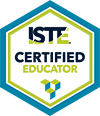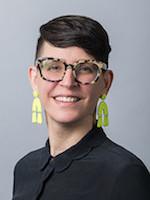






Three primary frameworks guide this session. First, the Teacher Education Technology Competencies (TETCs) (Foulger et al., 2017) provide a road map for what teacher educators need to know and be able to do in order to effectively infuse technology in teacher education. Second, the ISTE EPP Digital Equity and Transformation Pledge provides a vision for the role of technology in teacher education. Third, the New York State Culturally Responsive-Sustaining Education (CRSE) Framework (New York State Education Department, 2018) offers a critical guide for teaching equitably and inclusively for all learners. Together, these three frameworks ground the process and product presented.
The primary research method employed is critical collaborative autoethnography, which calls for the collaborative study of shared experience that challenges dominant notions of power (Boylorn, et al., 2020; Chang, et al., 2013). Collaborative and individual meeting notes, journal entries, and fieldnotes were collected and co-analyzed in an ongoing process between August 2022 and April 2023 to inform the story shared in the session. The results capture the process and product of creating a strategic plan for technology infusion in teacher education. Data collection sources include:
1. biweekly meeting notes: co-authored and kept in a shared Google doc to which everyone on the team has editing access.
2. 3-minute journal entries at the end of each meeting: authored in the final few minutes of every meeting, journal entries are open-ended and can expand on anything that felt significant, fraught, celebratory, educative, etc.
3. double-entry journal notes from shared readings and viewings: in the left column of the template that looks like a T-chart, team members write what struck them from shared readings and viewings; on the right column of the template, team members write why it struck them.
4. fieldnotes from two all-school-of-education meetings, three department meetings, discussions with school of education administrative personnel, and inter/national webinars attended by team members: as team members travel through their daily work, they take note of interactions around technology that may be worth collecting as data to help shape this story as it unfolds.
Data will be coded for themes and shaped into a collaborative autoethnography.
Data collection and analysis is expected to be completed by April 2023, by which time presenters will also have completed the creation of a five-year strategic plan for technology infusion in their school of education. The session will include a discussion of the process and findings of the critical collaborative autoethnography, as well as a fully designed blueprint for implementing the resulting five-year strategic plan around the below outline:
Year One: survey faculty, hold focus groups, interview key stakeholders, and analyze data for themes
Year Two: design professional learning plan for faculty
Year Three: implement phase one of professional learning plan and design curriculum implementation plan
Year Four: implement phase two of professional learning plan and phase one of curriculum implementation plan
Year Five: implement phase two of curriculum implementation plan and evaluate infusion progress through surveys, focus groups, and interviews
Analysis will be ongoing in order to determine the specific pathways in which this model informs and impacts teacher educators’ technology infusion at our institution.
As expectations for budget neutrality rise alongside competing perceptions and beliefs on the efficacy of technology infusion in teacher education, schools of education are tasked with ongoing work that will have long-lasting impacts on the next generation of educators. It is our collective hope that as schools of education around the world respond to ISTE’s EPP Digital Equity and Transformation Pledge that we can learn from and with each other about what works and what does not in these uncertain and ever-changing times. We believe that this session will provide a timely, unique glimpse into the boots-to-the-ground process for infusing technology in teacher education at a mid-sized public university. This is an exciting time for teacher educators, and a powerful moment for capturing the story of how technology infusion in teacher education unfolds in real time.
Bhattacharya, K. (2020). Connecting with water spirits: An autoethnography of home and higher education. In R. M. Boylorn & M. P. Orbe. (Eds.), Critical autoethnography: Intersecting cultural identities in everyday life (pp. 103-117). Routledge.
Borthwick, A. C., Foulger, T. S., & Graziano, K. J. (2022). Championing technology infusion in teacher preparation: A framework for supporting future educators. International Society for Technology in Education.
Chang, H., Wambura Ngunjiri, F., & Hernandez, K. C. (2013). Collaborative autoethnography. Left Coast Press.
Foulger, T.S., Graziano, K.J., Schmidt-Crawford, D. & Slykhuis, D.A. (2017). Teacher educator technology competencies. Journal of Technology and Teacher Education, 25(4), 413-448.
New York State Education Department. (2018). Culturally responsive-sustaining education framework. The University of the State of New York. Retrieved from http://www.nysed.gov